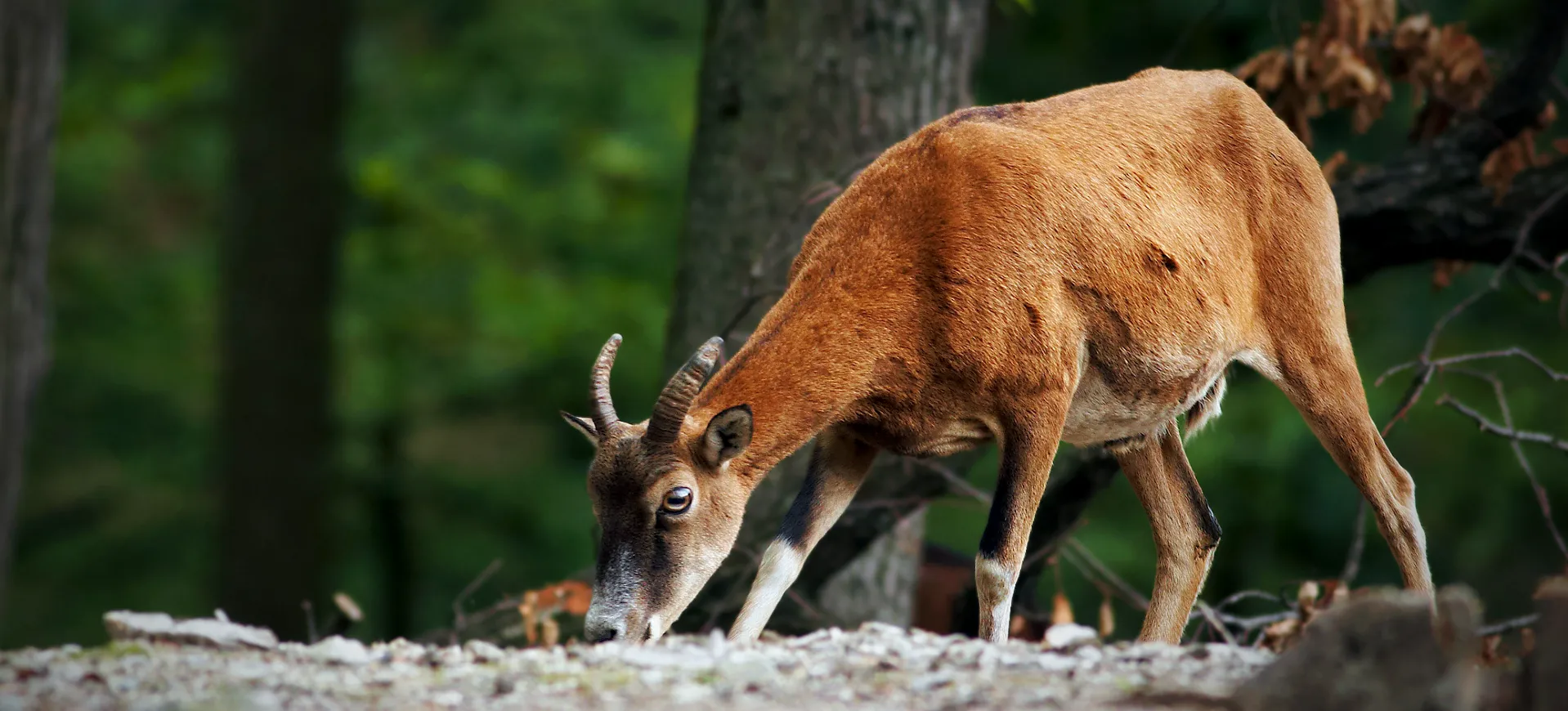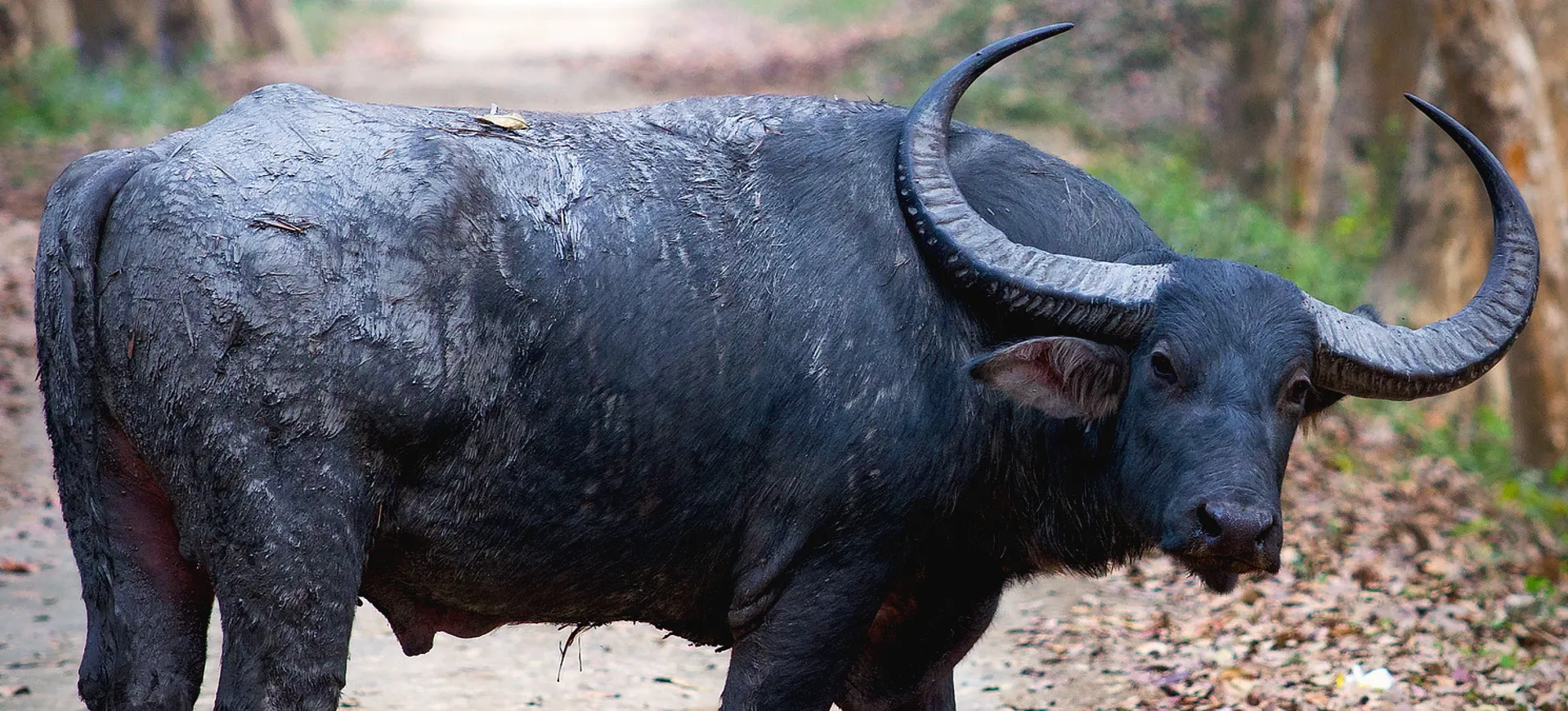Overview
The blue bull, the Nilgai (Boselaphus tragocamelus), is the largest Asian antelope native to the Indian subcontinent. Its distinct physical characteristics include a robust body and slender legs, with adult males featuring a unique bluish-grey coat, setting them apart in their native habitats. In contrast, females and juveniles are primarily tawny brown, lacking the blue hue characteristic of mature males. These animals are predominantly grazers, often found in varied environments composed of grasslands, shrubs, and trees, frequently near water sources, which are essential for their survival.
In terms of social behavior, Nilgai exhibits a unique structure. Typically, they form small herds comprising females and their young, while the adult males either lead solitary lives or join bachelor groups. Known for their shy and elusive nature, Nilgai prefers habitats offering substantial cover, aiding their protection from predators. They are primarily diurnal creatures, with most of their grazing activity occurring during the cooler parts of the day. However, they can adapt their feeding patterns to different environmental conditions.
The interaction of Nilgai with human environments presents a unique set of challenges, especially in agricultural regions. They are often regarded as pests due to their propensity to feed on crops, leading to significant conflicts with local farmers. This conflict underscores the broader issue of habitat encroachment and the need for effective wildlife management and conservation strategies. Despite their adaptability to various environments, the balancing act between the Nilgai’s natural behaviors and the pressures of expanding human activities remains a key concern in their conservation.
Taxonomy
Kingdom
Phylum
Class
Order
Family
Genus
Species
Type
Physical Description:
Adult male Nilgai have a distinctive bluish-grey coat, while females and juveniles are tawny brown. Males are significantly larger than females, standing up to 4-5 feet at the shoulder and weighing between 400-500 pounds, whereas females usually weigh around 300 pounds. Both sexes have white spots on their cheeks and white coloring on the edges of their ears, under the chin, and around the eyes. Males possess short, conical horns, which are absent in females.
The body structure of the Nilgai is characterized by a robust torso and slender legs, enabling them to run swiftly when threatened. Their long legs and sturdy build are adaptations for running in open terrain. Males also have a ‘beard’ or tuft of hair on their throats, adding to their distinct appearance. The Nilgai’s physical characteristics are well-suited to their habitat, providing camouflage and agility in forested areas and open grasslands.

Lifespan: Wild: ~10 years || Captivity: ~20 years

Weight: Male: 400-500 lbs (180-230 kg) || Female: 300 lbs (136 kg)

Length: Male: 6-6.5 feet (180-200 cm) || Female: 5-5.5 feet (150-165 cm)

Height: Male: 4-5 feet (120-150 cm) || Female: 3-4 feet (90-120 cm)

Top Speed: 29 mph (47 km/h)
Characteristic:
Native Habitat:
The Nilgai is native to the Indian subcontinent and is primarily found in parts of India, with smaller populations in southern Nepal and eastern Pakistan. They inhabit various environments, from dry grasslands and scrublands to areas with dense vegetation. Nilgai prefers plains and low hills with good vegetation cover, often near water sources. They are also commonly found in agricultural areas, sometimes leading to conflict due to crop raiding.
Adapting to various habitats has been a key factor in their survival, allowing them to thrive in natural and modified landscapes. However, this adaptability also brings them into frequent contact with humans, leading to habitat loss and increased conflict—conservation efforts in their native range focus on balancing the needs of wildlife with those of local communities. The Nilgai’s ability to thrive in diverse habitats has helped them maintain stable populations despite habitat fragmentation and human encroachment challenges.
Climate Zones:
Biomes:
Biogeographical Realms:
Continents:
Diet:
Diet & Feeding Habits:
Nilgai are primarily grazers, feeding on grasses, leaves, and buds. They also consume fruits and grains, particularly when they come into contact with agricultural fields. Their diet varies depending on the availability of food sources in their habitat. During dry periods, they may travel long distances for food and water.
In agricultural regions, Nilgai is known to cause significant crop damage, leading to conflicts with farmers. They prefer certain crops, leading to extensive losses for local farmers. Their adaptive feeding behavior allows them to survive in lush and arid environments. Conservation efforts often involve managing human-wildlife conflicts arising from their feeding habits.
Mating Behavior:
Mating Description:
Nilgai has a polygynous mating system, where dominant males mate with multiple females. During the breeding season, males become territorial and may engage in aggressive behaviors to establish dominance and attract females. The breeding season usually occurs from September to November, coinciding with the post-monsoon period. Males display their fitness through physical displays and vocalizations to attract females.
Females reach sexual maturity around 18 months of age, while males mature later, around 2.5 years. After a gestation period of approximately eight and a half months, females typically give birth to one or two calves. The calves are born in secluded areas and are well-developed at birth, able to stand and walk within a few hours. This early mobility is crucial for their survival, allowing them to follow their mothers and escape predators.
Reproduction Season:
Birth Type:
Pregnancy Duration:
Female Name:
Male Name:
Baby Name:
Social Structure Description:
Nilgai exhibits a social structure where females and juveniles typically form small herds, while adult males are often solitary or form bachelor groups. Herds usually consist of 10-20 individuals, although larger groups can be seen in areas with abundant resources. The social hierarchy within these groups is not rigid, allowing for dynamic interactions and movement among individuals. Bachelor groups are less stable than female herds, with males often leaving to establish territories.
The solitary nature of adult males is more pronounced during the breeding season when they become territorial. In contrast, females and young nilgai maintain a more cohesive group structure, providing safety and social interaction. These groups commonly use social behaviors such as grooming and mutual alertness to predators. The Nilgai’s social structure reflects their adaptability to different environmental conditions and helps in resource utilization and predator avoidance.
Groups:
Conservation Status:
Population Trend:
The overall population of the Nilgai is considered stable, though exact numbers in the wild are not precisely known. In their native range, particularly in India, they are commonly found in suitable habitats and are not currently at risk of significant decline. However, localized populations may face threats from habitat loss and hunting pressures. The species’ adaptability to different environments has contributed to their stable population status.
In areas where their habitat overlaps human settlements, Nilgai can sometimes be seen as a nuisance due to crop raiding. This has led to conflict with local farmers, impacting the perception and treatment of the species in agricultural regions. Despite these challenges, the Nilgai has managed to maintain a relatively healthy population in the wild. Conservation efforts are focused on mitigating human-wildlife conflict and ensuring sustainable coexistence in areas of shared habitat.
Population Threats:
The primary threats to the Nilgai population include habitat loss due to agricultural expansion and urbanization, leading to habitat fragmentation. As their natural habitat is converted for human use, Nilgai is forced into closer contact with human settlements, often resulting in conflict. Hunting for meat and sport, particularly in areas outside their native range, threatens local populations. Competition with domestic livestock for grazing and water resources can also impact their survival in certain areas.
Human-wildlife conflict, particularly in agricultural regions where Nilgai are known to raid crops, is a significant challenge. These conflicts can lead to retaliatory killings or efforts to translocate the animals, impacting their population dynamics. Disease transmission between Nilgai and domestic livestock is another concern, as it can affect the health of wild populations. Conservation efforts aim to address these threats through habitat conservation, effective management of human-wildlife interactions, and research to better understand the ecological impact of these challenges.
Conservation Efforts:
Conservation efforts for the Nilgai focus on habitat preservation and managing human-wildlife conflicts. Protecting natural habitats from further fragmentation and degradation is key to ensuring the species’ long-term survival. In areas where Nilgai comes into conflict with human activities, particularly agriculture, strategies such as developing sustainable farming practices and creating buffer zones are being implemented. Educational initiatives aimed at local communities help to increase awareness about the species and the importance of coexistence.
Research is crucial in conservation, providing insights into the Nilgai’s ecology, behavior, and interaction with human-modified landscapes. Conservation programs often involve collaboration between wildlife authorities, local communities, and conservation organizations. Efforts to monitor populations and study their movement patterns aid in developing targeted conservation strategies. The overall goal of these efforts is to maintain a balance between the needs of Nilgai populations and the requirements of local communities and ecosystems.
Additional Resources:
Fun Facts
- The name ‘Nilgai’ translates to ‘blue cow’ in Hindi, a reference to the bluish-grey coat of the adult males.
- Nilgai can clear fences over 6 feet tall, showcasing their agility and jumping ability.
- Unlike many other antelope species, Nilgai can tolerate moderate salinity levels in water and vegetation, allowing them to inhabit coastal areas.
- Male Nilgai’s tusks have elongated incisor teeth, which they use during fights for dominance.
- Nilgai have a unique glandular structure near their hooves, which secretes a tar-like substance for marking territory.
- They are one of the few antelope species where the male is significantly larger and differently colored than the female.
- In India, the Nilgai holds religious significance in Hindu culture, which has historically provided them with protection from hunting.
- The introduction of Nilgai in Texas, USA, was initially for exotic game hunting, but they have since established feral populations in the region.














































































